Rouen ducks are a popular duck breed — and for good reason. They are an attractive breed that is well suited for many uses.
Whether you are looking to hit the shows and win some awards or looking to add a splash of color and charismatic appeal to your backyard flock, Rouen ducks fit the bill with their outstanding plumage and unique bodies.
This guide breaks down everything you need to know about the famous Rouen ducks.
Table of Contents
History
The famous Rouen duck breed hails from France, but it was only upon reaching England in the 1800s that it was developed into the current-day Rouen.
In England, breeders refined the previously Mallard-resembling bird version into a larger version with a boat-shaped lower body thanks to a longer breastbone ridge and more defined markings.
In 1850, D.W. Lincoln of Massachusetts introduced the first Rouen ducks to the United States.
Here, they were first used as an all-purpose duck breed until their show or exhibition qualities gained popularity.
Several decades later, the Rouen duck breed was included in the Standard of Perfection by the American Poultry Association in 1874.
Since then, it has gained immense popularity and recognition as the ultimate mark of beauty in the heavyweight category.
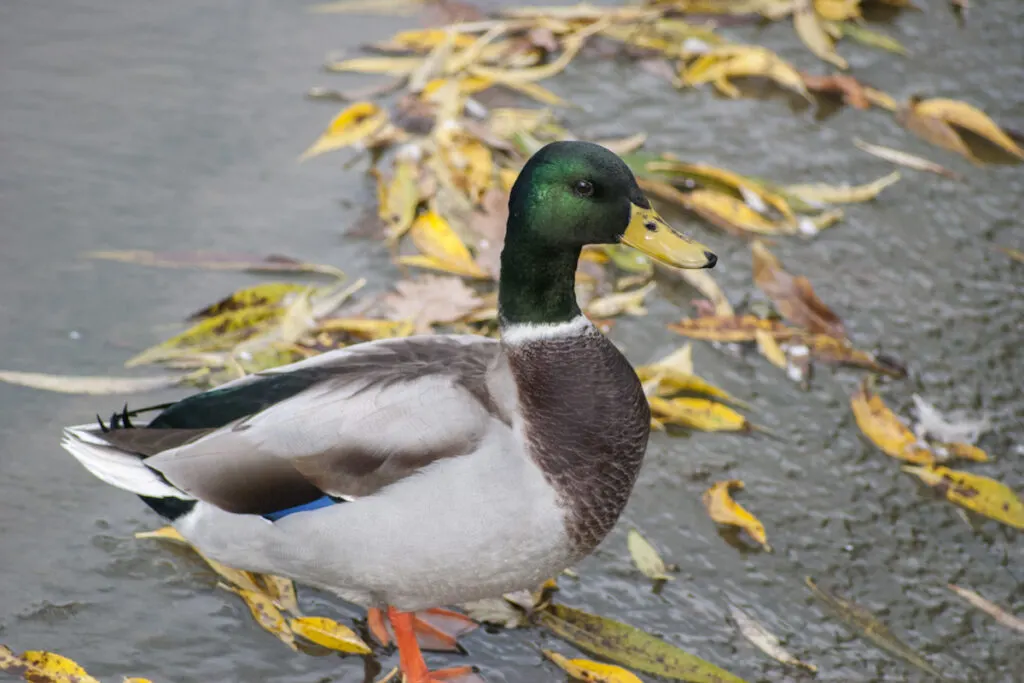
Background
Upon reaching England in the 1800s, the ducks we call Rouens todays were referred to by various names including:
- Roan: a mixture of colors
- Rohan: a Catholic Cardinal
- Rhone: referring to an area in southwest France
- Rouen: a town in north-central France
Eventually, Rouen is the name that stuck and is universally used today. That said, France still has two names for this duck breed. They are:
- Rouen Fonce: meaning dark in color
- Rouen Clair: for a lighter variant.
Appearance
The Rouen drakes have an attractive plumage — hence their exhibition or show capabilities.
Rouen drakes’ tail, upper neck, and head have a lovely emerald green hue that contrasts perfectly with the bird’s orange shanks and feet, brown eyes, and deep yellow bill. Their lower body and upper back blend into a beautiful shade of gray.
The lower neck has an earthy, dark brown shade that extends to the breast region. This contrasts seamlessly with the white band that encircles the neck. Its wings may also have blue and white strokes.
Rouen hens, on the other hand, have beautiful brown plumage with distinct black texturing throughout their wings, necks, head, and body.
This plumage contrasts sharply with the bright blue diagonal patterns on their wings.
The hens also have deep orange feet and shanks and brown bills. And they have noticeable tan stripes that extend from the back of their black eyes to their bills.
Though Rouen ducklings have a similar plumage coloring to Mallard ducklings, they are quite easy to tell apart. This is thanks to the second stripe that cuts across the face, right beneath their eyes.
Adult Rouens are also easier to differentiate from Mallards since they are larger and have darker plumage.
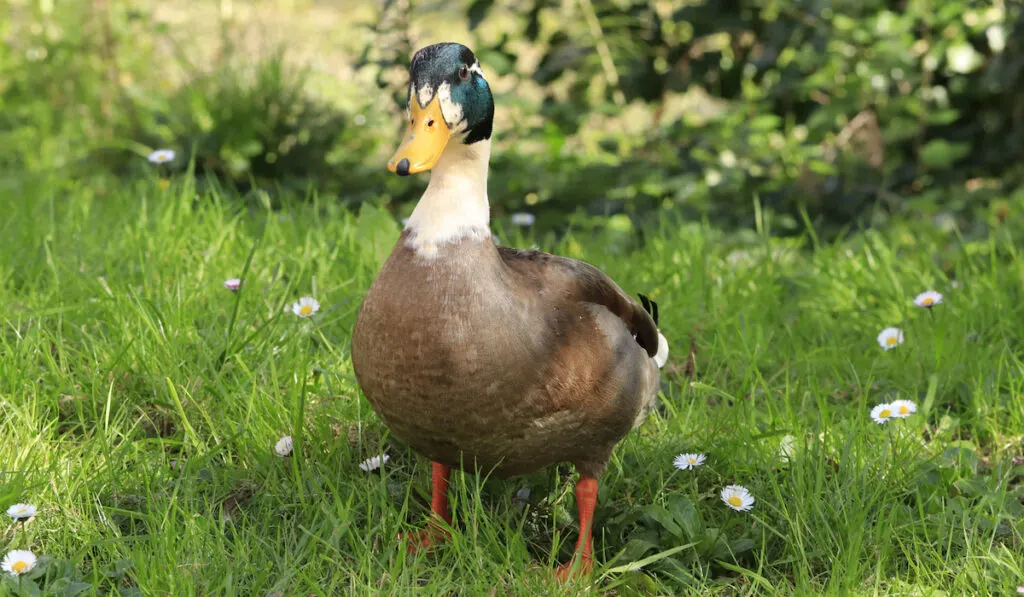
Size
The Rouen ducks are considered a heavy duck breed by the American Poultry Association.
Today, there are two varieties of Rouen ducks bred in the United States, that is, the standard breed and the production (common) variety. The Production variety has a regular duck form but is larger than a Mallard.
The standard Rouen duck variety of the U.S. is larger than the common variety and has a squarer conformation. This variety can reach an average body weight of 9 to 10 pounds.
This is two to three pounds heavier than their production variety counterparts, which can reach a body weight of 7 to 8 pounds.
The standard variety has a round head with a medium-sized bill. It also has a broad and sturdy build with a leveled, deep keel that gives it a renowned horizontal stance.
The production variety, on the other hand, has a trimmer body with a more upright posture.
Uses
Rouen ducks were traditionally known as roasting ducks because they were primarily raised for meat and eggs.
This was due to their heavy build that guaranteed decent meat production for roasting.
Today, the duck breed is raised as a general-purpose duck because aside from their eggs and meat, Rouen ducks are also raised for exhibitions.
Exhibitions are the true strength of the Rouen duck thanks to its appealing plumage and unique body.
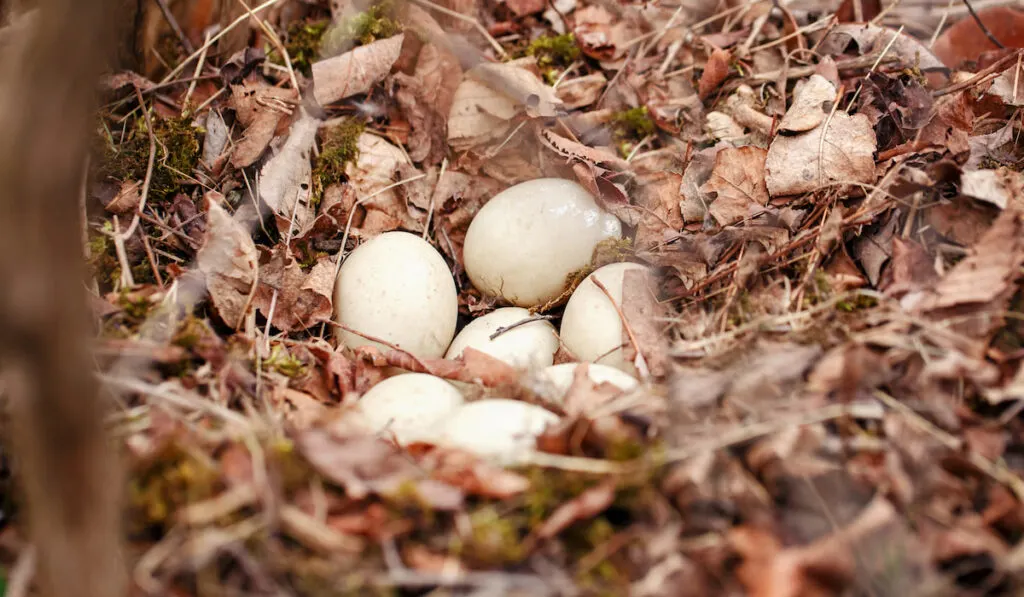
Egg Production
Contrary to what you may expect, Rouen ducks are not the best duck breed to raise if you are looking for eggs. This is mainly because they are inconsistent egg layers.
While some Rouen hens can lay up to 125 eggs annually, the minimum annual threshold is 35 eggs. This is quite a low yield for the hens to be raised for eggs.
Production Rouens have, however, been shown to be better egg layers with 140 to 180 eggs annually.
Slow maturity is another reason why Rouen hens are not the best egg layers. Unlike other duck breeds, it might take seven to ten months for the hens to fully mature — before you see the first egg.
What’s more, their massive bodies do not help the situation as females are known to crush their eggs when they sit on them.
All in all, when Rouen hens do lay eggs, they are usually white with occasional blue and green hues which make them quite appealing.
Meat Production
On the flip side, Rouen ducks are one of your best options for meat production.
This is primarily why they were traditionally raised as roasting ducks — due to their large body profile hence meat production.
While Rouen ducks are excellent producers of flavorsome meat, they are impractical for commercial use due to their slow maturity, which can take up to 8 months. This only makes them ideal for subsistent use.
That said, farmers with production Rouens can process them as early as 4 months when they are about five and a half pounds.
This provides for leaner and more mellow-tasting meat and allows you to save money on feed.
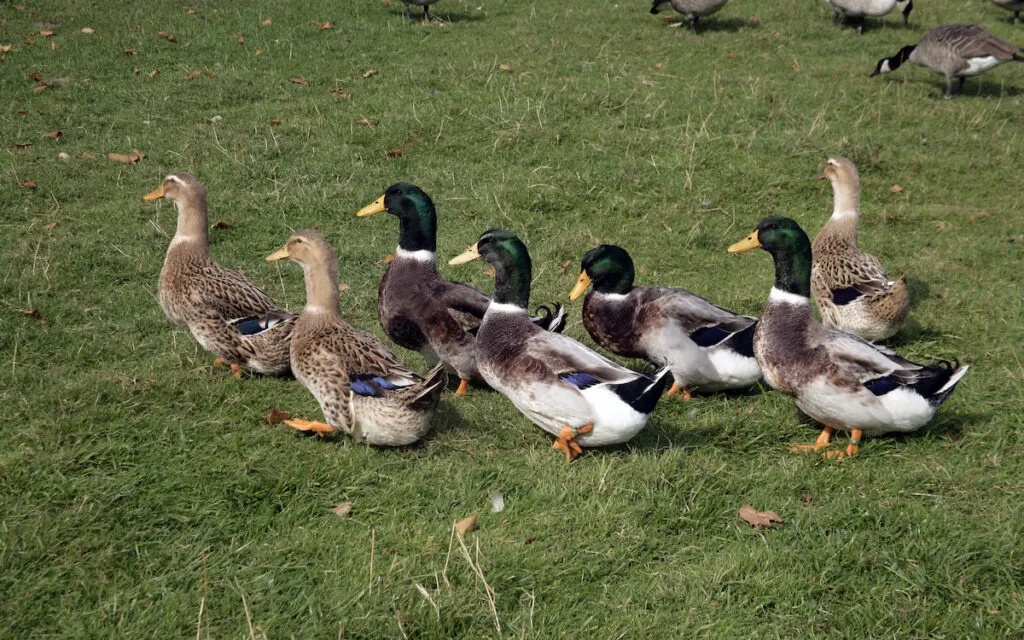
Show Capabilities
Exhibition or showing is where the true strength of the Rouen duck lies. Since it is not a very productive breed, people are raising Rouen ducklings simply because they look good.
Luckily, there are numerous annual shows, especially in the United States, United Kingdom, and France where these majestic birds flaunt their beauty and bag awards.
Keep in mind that the competition is high out there, mostly because only the serious breeders take on the Rouen duck for the exhibition — Rouen’s low egg production only means that the duck is a challenging one to breed.
Colors
Today, standard and production Rouen duck varieties are widely recognized breeds. This doesn’t, however, mean that they are the only Rouen breeds that have existed.
Breeders have also developed and exhibited Pastel, Black, Fawn, and Blue Rouen varieties.
Unfortunately, none of these varieties have been accepted by the American Poultry Association so far.
Behavior
Rouen ducks are excellent foragers and will appreciate ample ground cover to free-range and forage for decent portions of their nutritional needs.
In addition to acquiring food, foraging is a great form of exercise for an otherwise lazy bird breed.
Also, being waterfowl, Rouen ducks are happy when provided with clean water to drink, bathe and even swim in. Luckily, you don’t have to worry about the birds flying away since they are generally poor fliers.
Temperament
Despite their massive size, Rouen ducks are calm and easy-going ducks that are easy to handle and care for.
This makes them a great choice for anyone trying their hand in the duck-keeping niche.
What’s more, the docile nature and calm personality of Rouen ducks makes them ideal pets to keep, especially because of their eye-catching plumage.
They are commonly referred to as “majestic,” which sums up every attribute of the birds.
That said, drakes can be a bit aggressive, especially when guarding a nest — they typically chase anyone who comes near the hen or her territory.
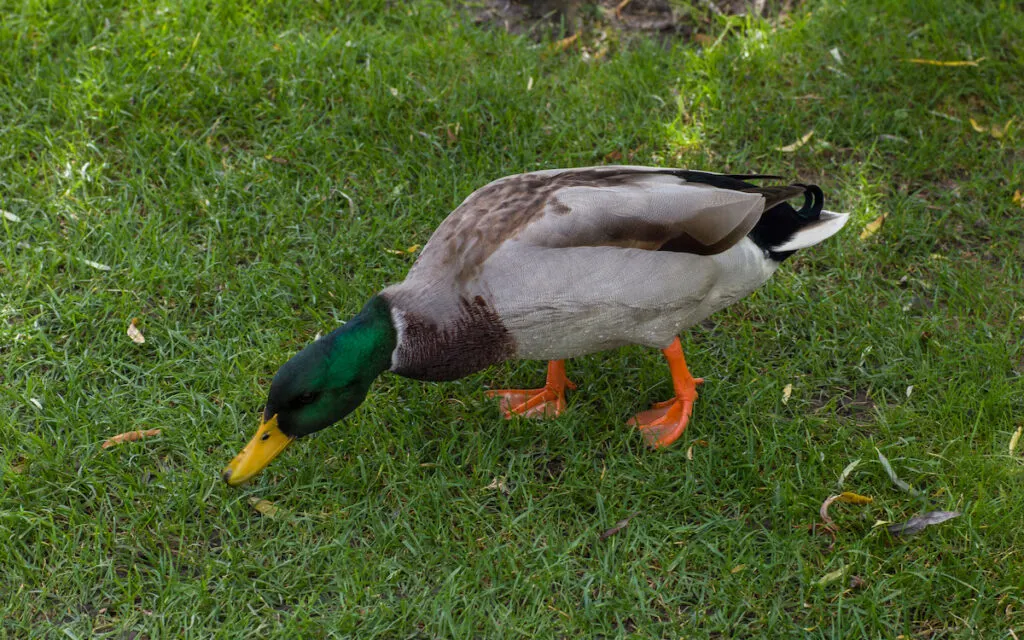
Life Span
How long Rouen ducks live comes down to two things. That is:
- The purpose it is being raised for
- The conditions it is raised in
For instance, Rouen ducks raised for meat can only live for a year or until they reach maturity.
Alternatively, Rouen ducks raised for exhibition purposes and given the best care are likely to live up to between 8 and 12 years.
Breeding and Brooding
Rouen ducks are not necessarily the best brooders out there, mostly because of factors that are out of their control. It is mainly a challenge in the standard Rouen variety and here is why:
Firstly, the hens mature slowly, which means that they take a long time to reach a reproductive age.
Secondly, even upon reaching maturity, the birds are not consistent layers, which again negatively affects any chances of successful brooding.
Thirdly, in the rare case that the Rouen hens do lay eggs, it is almost impossible for the birds to hatch them.
Due to their immense weight, the birds almost always end up breaking their eggs whenever they try sitting on them.
Lastly, the overly developed keels can lead to breeding problems in drakes. Farmers are, therefore, advised to retain several males for breeding that are not as extreme in keel development and size.

Housing
Unfortunately, with Rouens being flightless and heavily built, they cannot easily escape predators.
As such, it is vital to ensure that your ducks’ enclosure and run are well secured against predators to keep them safe.
These safety measures should also apply to the run that extends from the coops since it is where your Rouen flock free ranges as they forage.
Luckily, Rouens are a remarkably lazy breed that will not wander off too far.
Noise Levels
As we have already established, Rouens are a docile and easy-going breed. True to this nature, they tend to be quiet and go about their lives without fussing about anything.
Unlike other duck breeds, Rouen hens are considered more talkative than noisy. This makes them an ideal duck breed to raise as a pet, especially if you are cautious about noise.
Common Health Issues
While Rouen ducks are generally a healthy breed, they are prone to developing bumblefoot. This is due to their massive size and inability to fly.
When foraging or moving around, the birds are prone to cutting their feet on rough surfaces. This opens up wounds where infections enter their bloodstream causing abscesses on their feet.
With this in mind, it is important to keep your duck enclosures and your environment in general clean and free of any sharp items.
Final Thoughts
So, will Rouen ducks make a great pet for you or a worthy addition to your existing backyard flock? Do they sound like a breed you would want to raise as a beginner?
Thankfully, these questions are now easier to answer with this guide.
However, Rouens are a worthy consideration if you are looking for a friendly breed with eye-catching plumage to show or to keep as a pet.
Resources
- https://amerpoultryassn.com/accepted-breeds-varieties/
- https://en.wikipedia.org/wiki/Rouen_duck
- https://www.purelypoultry.com/rouen-ducklings-p-623.html
- https://breeds.okstate.edu/poultry/ducks/rouen-ducks.html?Forwarded=afs.okstate.edu/breeds/poultry/ducks/rouen/index.html/
- https://www.roysfarm.com/rouen-duck/
- https://springhaven.farm/pages/rouen-duck
- https://livestockconservancy.org/heritage-breeds/heritage-breeds-list/rouen-duck/
- https://chickenmag.com/rouen-duck-and-ducklings-facts/
- https://www.mcmurrayhatchery.com/rouen.html
